Brigid is a goddess from Celtic mythology. She is a very complex character and is known as the goddess of poetry, healing, fertility, and smithing. In Irish mythology, she is often referred to as the triple goddess having three different aspects that represent different domains of life.
Even today, Brigid is still celebrated by some people who remained faithful to the old and is considered a symbol of healing, inspiration, creativity, and transformation.
Table of Contents
Who is Goddess Brigid?

The goddess Brigid was one of the most important goddesses of pre-Christian Ireland. The daughter of the Dagda, the Father of Ireland, Brigid was associated with wisdom, poetry, and healing. The many domains that the rules over have given rise to theories that she may have been a triple goddess.
Brigid was thought to be a bridge between humankind and the otherworld. Her imprint can be seen in sacred sites scattered all over the magnificent landscapes of Ireland. Thousands of years ago, Brigid was called upon by the druidic cults that were devoted to worshiping her for a variety of things.
READ MORE: Druids: The Ancient Celtic Class That Did It All
Brigid: Goddess of Wisdom and Healing
In Celtic mythology, their gods and goddesses are seen not so much as the creators but as ancestors of the people. Brigid’s domains seem to be mired in confusion. Different sources cite different opinions about what she was actually the goddess of. However, it is universally stated that she was the goddess of wisdom and poetry. Poets and craftsmen revered the goddess, who was considered a fount of innovation.
The Romans, when they arrived on the British Isles, associated Brigid with the Roman Goddess Minerva, because of these qualities.
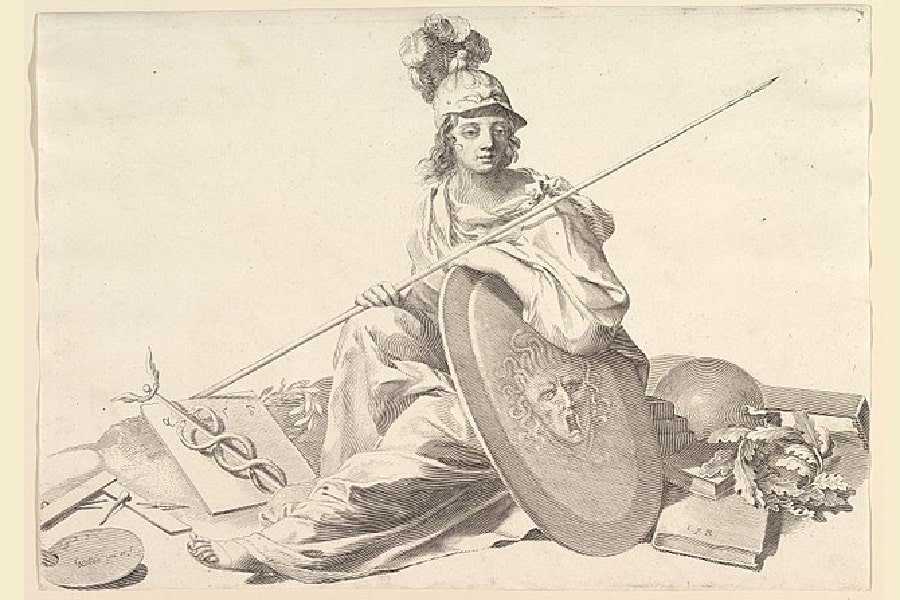
READ MORE: Roman Gods and Goddesses: The Names and Stories of 29 Ancient Roman Gods
Triple Goddess
Irish mythology mentions three goddesses of the same name: Brigid the wise or Brigid the poet, Brigid the healer, and Brigid the smith. Thus, Brigid may have been a triple deity, one goddess worshiped in three different forms. Another theory is that there may have been three sisters of the same name.
However, the former does seem more likely. It is very usual in pagan cultures and religions to split different aspects of one deity into different forms. Thus, Brigid may have been worshiped by different people in her three forms, depending on what the person required of her at the given moment.
READ MORE: Pagan Gods from Across the Ancient World
Other Domains
The Celtic goddess was also considered a mother goddess and a hearth goddess. In local myth, Brigid is closely associated with fire and considered a fire goddess like Hawaiian Pele. This is not unusual in deities associated with blacksmithing since the two usually go together (for example Hephaestus).
But this means that apart from her more grandiose, public persona, Brigid was also a protector of the home and the family. The ancient Celts also had rituals where an expectant mother would walk over ashes and embers, seeking the protection of Brigid for their unborn children.
READ MORE: Ancient Civilizations Timeline: 16 Oldest Known Cultures From Around The World
Brigid Goddess and Saint Brigid
Some scholars, like the medievalist Pamela Berger, believe that the Celtic goddess Brigid was later syncretized with Saint Brigid or St Brigid of Kildare. The Christian saint is associated with an ever-burning sacred fire in Kildare, surrounded by a hedge no man can cross. Many pre-Christian faiths had the tradition of female priestesses tending sacred flames. This might have been a practice from the worship of the goddess Brigid that has carried over into the Christian religion now.
Thus, both St Brigid and the goddess are associated with fire. They are also both associated with holy wells found all over Ireland and Scotland. Saint Brigid’s feast day also coincides with Imbolc, the first day of spring and the festival day traditionally associated with the goddess Brigid.

Symbolism and Attributes
This Celtic goddess was an absolute dichotomy. Appearing as a redheaded woman associated with fire, passion, fertility, and motherhood, she was also the goddess of healing and poetry. Fire and sacred wells were equally important symbols of Brigid, who was seen as a protector first and foremost. As a form of the primordial mother deity, she protected men and women, children, and domesticated animals.
The symbols that Brigid was most associated with were her wells, found all over Ireland. Thus, she was not just a goddess of fire but the water goddess too, and water was one of her dominions. Another symbol of Brigid is the Brigid Cross, a cross made of grass that is usually hung over the doorways of homes. This is a symbol of St Brigid as well.
Brigid sometimes wore a cloak made of sunbeams.
What Does Her Name Mean?
The Old English term was ‘Brigit,’ which in later years became ‘Brigid.’ This has given rise to many forms of the name in Europe, from ‘Bridget’ in English to ‘Brigitte’ in French or ‘Brigida’ in Italian. All of these are derived from the medieval Latin ‘brigit.’
The name essentially means ‘the exalted one’ or ‘the high one.’ It might have been derived from ‘Brigantia,’ the ancient British goddess. The word very possibly came from the Old High German ‘Burgunt’ or the Sanskrit ‘Brhati’ which means ‘high’ and was one of the titles for the Hindu goddess of the dawn, Usha.
Since the name ‘Brigid’ possibly comes from the Proto-Indo-European words for ‘high’ or ‘rise,’ the goddess Brigid might have associations with ancient dawn goddesses across Asia and Europe.
In her earliest form of ‘Breo-Saighit,’ she had the epithets of ‘Flame of Ireland’ and ‘Fiery Arrow.’
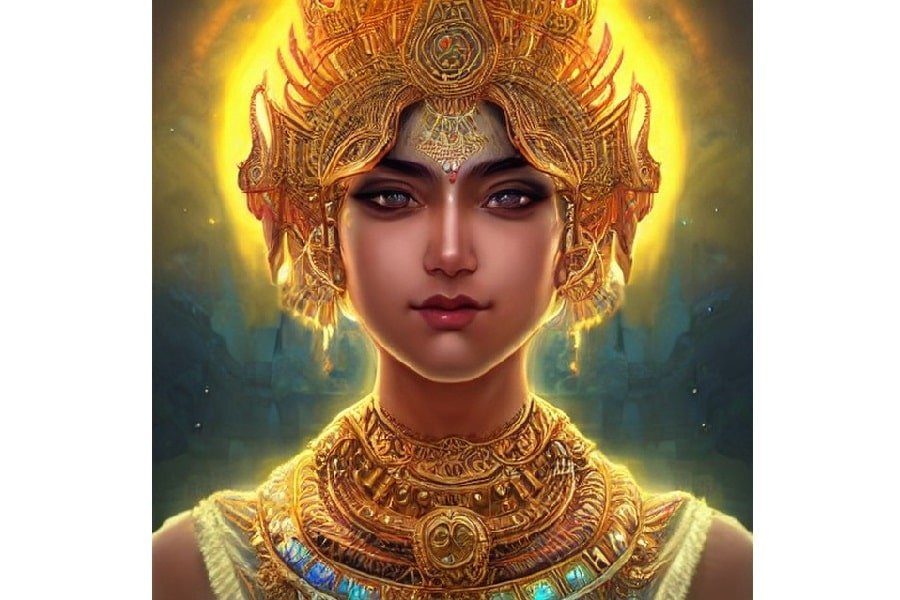
Family
Brigid is one of the more well-documented deities of the Celtic pantheon. So we do have some information about her parentage and the other gods and goddesses that she might be related to or associated with. Chief among them is of course her father, the Dagda, essentially the king of the pantheon. They are both important members of the Tuatha Dé Danann, a supernatural race who appear a great deal in Irish mythology.
As per the Lebor Gabala Erenn, the Tuatha Dé Danann were later settlers who came to Ireland by sea. On reaching, they began a war against a tribe that had already lived in Ireland, the Formorians.
This is mythology and not history. But, looking at the way the British Isles received waves of settlers one after the other, who often warred against each other and had their own tribes and factions, we can conclude that the ancient Celts were drawing on their own history while telling these tales.
READ MORE: Ancient War Gods and Goddesses: 8 Gods of War from Around the World
Parents
Brigid was the daughter of Dagda or the Dagda (meaning ‘the Great God’), the king and father figure among Celtic gods and goddesses. He was also a powerful chief of the Tuatha Dé Danann. The Dagda was a druid and was much associated with life and death, fertility and agriculture, magic, and wisdom. We can see that some of the aspects of the Dagda passed to his daughter.
Brigid does not appear to have a mother. While the Dagda is the supposed husband or lover of the Morrígan and Boann, neither of these deities are said to be the mother of Brigid. Some sources say that Brigid’s mother was the goddess Danu herself, the namesake of the Tuatha Dé Danann (Children of Danu) but no substantial evidence has been found for this.
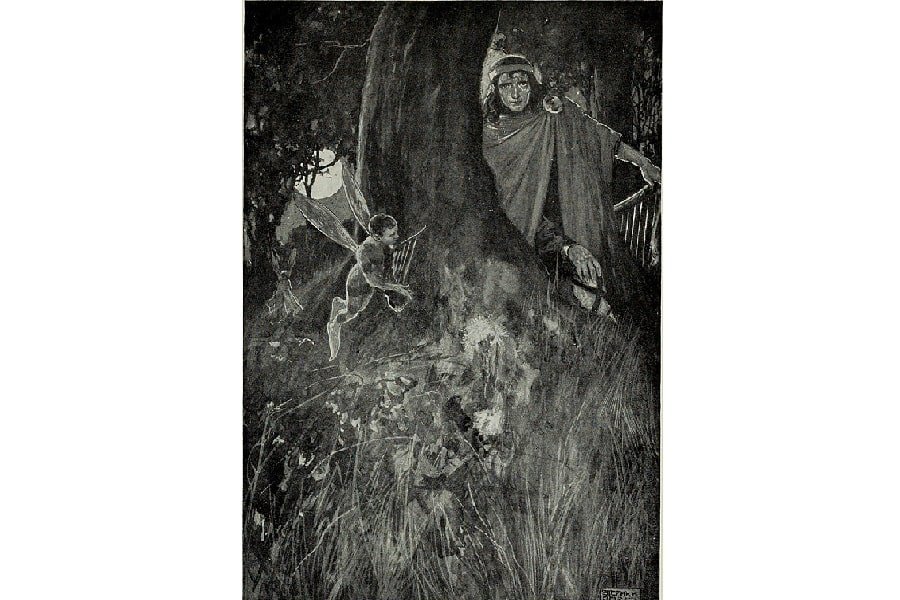
Siblings
Through her father, the Dagda, Brigid has several siblings. Some of the better-known among them are her brother Aengus, the son of the Dagda and Boann, and Bodb Derg, the successor of the Dagda as King of the Tuatha Dé Danann. Her other brothers include Cermait, the ancestor of the High Kings of Ireland, Aed, and Midir.
Husband
Brigid was the wife of Bres or Eochaid. Bres was born of the Fomorians on his father’s side. The Fomorians were also a supernatural race of people but they were opposed to the Tuatha Dé Danann. The two sides were often at war. This marriage was meant to reconcile the two sides, although that did not really happen.
Brigid and Bres together had one son named Ruadan.
Children
Ruadan, son of Brigid and Bres, favored his father’s side of the family. He learned the art of blacksmithing from his mother’s side, the Tuatha Dé Danann, but used it against them to mortally wound their tribe smith, Giobhniu. He was in turn killed by Giobhniu before the latter’s death. This entire incident is chronicled in Cath Maige Tuired, an Irish mythological saga.
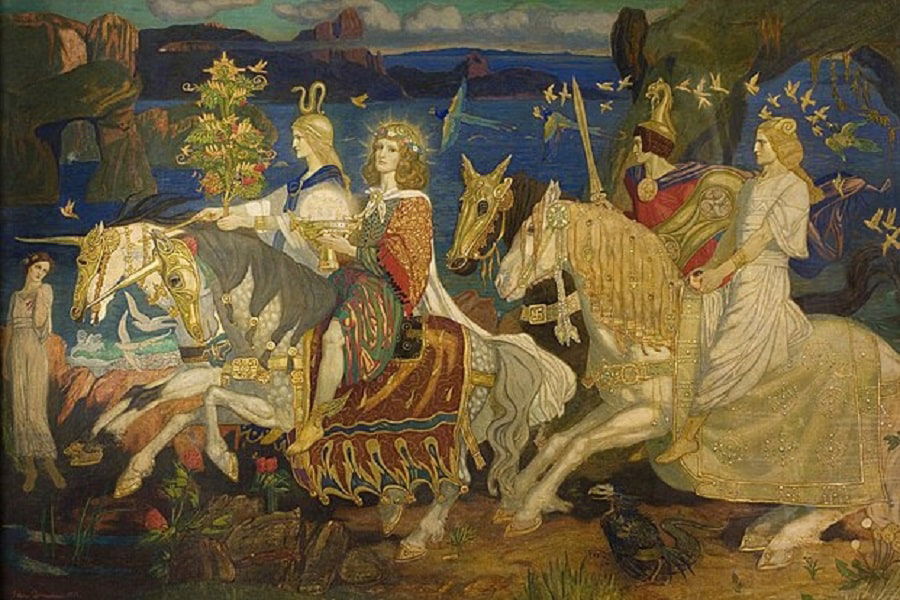
Mythology
Not a lot of mythology exists about the Celtic goddess Brigid to this day. But there are two stories about her that do give us some idea about her character. The two myths that are known about the goddess now are the stories of her birth and the death of her son.
Birth of Brigid
According to Celtic mythology, Brigid was born with the sunrise. She was supposedly elevated into the sky with light shining from her head and was fed the milk of a sacred cow as a baby.
This unconventional birth might explain why her mother is never mentioned anywhere. It also might explain the origins of her name and the reason that she might be linked to various Indo-European dawn goddesses.
It is also said of Brigid that when she walks on the ground, flowers spring up in her footsteps. Thus, she is also associated with spring, growth, and fertility.
Second Battle of Moytura
The two battles of Mag Tuired or Moytura are fought by the Formorans and the Tuatha Dé Danann against each other. While Bres plays a significant role in both battles, the mention of Brigid comes at the fall of her son.
When Ruadan falls in battle, while fighting on behalf of the Formorans, Brigid begins to keen in mourning. Irish myth proclaims this as the first keening or lament heard in their history. It became an essential part of Celtic and Gaelic funeral rites in later years. Professional singers would perform traditional vocal laments even into the nineteenth century.
One note of interest is that Irish folktales associated keening with the specter of banshees.
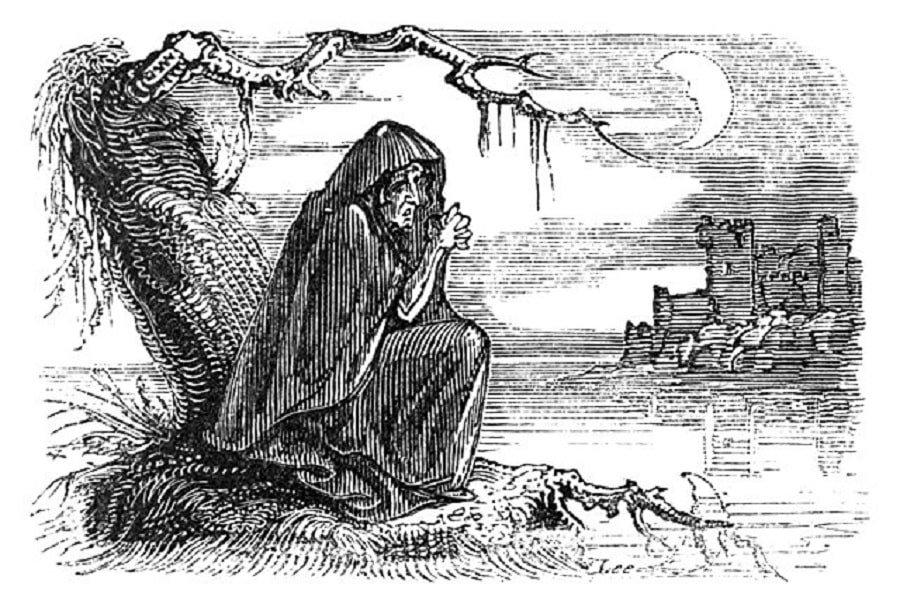
READ MORE: The Banshee: The Wailing Fairy Woman of Ireland
Worship
Brigid was worshiped by the ancient Celts in a variety of ways and for a variety of things. With the Neo-pagan revival, Brigid has still retained some importance in her position as the triple deity. Modern pagans lay a great deal of stress on the triple aspect of the goddess and the number of domains that she presided over.
Festivals
The Roman Catholic Church, the Eastern Orthodox Church, and the Anglican Communion celebrate the 1st of February as the feast day of St. Brigid. But this day also coincides with Imbolc, which is a pagan festival that celebrates the goddess Brigid. The ancient Celtic festival is a celebration of the coming of spring.
It is not clear whether the festival had always been associated with Brigid or whether it only happened in the Christian era after she became linked with the saint. But since the goddess has so many ties with the season of spring, it is quite apt that the festival should be in honor of her.
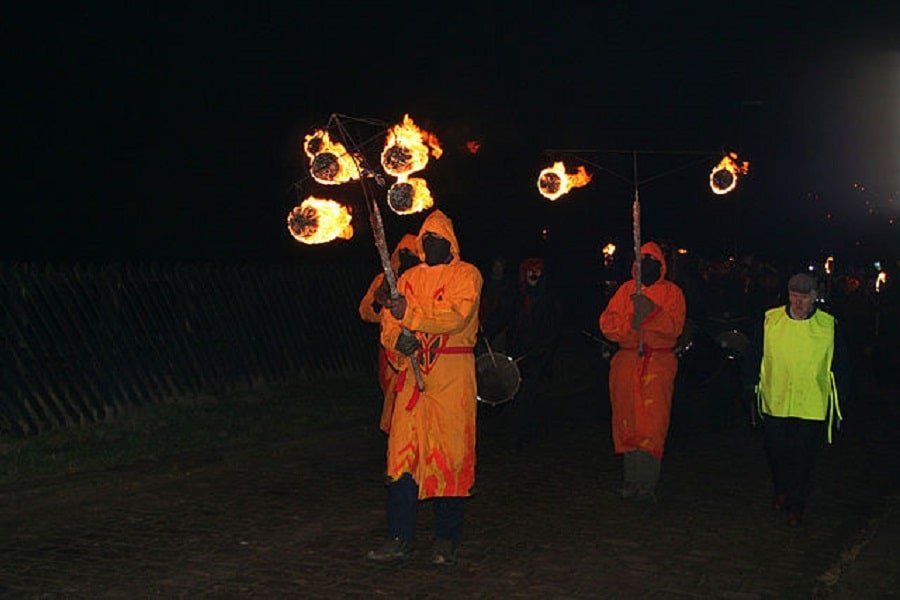
Sacred Sites
The Kildare Fire Temple and the Round Tower there are now dedicated to St. Brigid, but theories about the eternal flame burning there may have been around from pre-Christian times. Fire is an important part of druidic rituals and the goddess Brigid was worshiped by burning bonfires during Imbolc. It is not a stretch to theorize that the Christians took existing forms of worship and amalgamated them into their faith and rituals.
The goddess Brigid’s wells in Kildare and County Clare are two of the most famous well sites in all of Ireland. The former is said to have waters that heal wounds and illnesses. People come to this well seeking the blessings of not just the Christian saint but also of the pagan goddess of healing.
Cult
The cult of Brigid also began in Kildare, at the ancient chapel that was first dedicated to the goddess before being appropriated for the saint. Pagan women gathered together in those ancient days to attempt to understand the Otherworld and the truths that Brigid knew. As the goddess of wisdom and the bridge between the two worlds, Brigid was an important part of the community.
The present church and monastery may have been built on an oak grove which itself was the temple to the goddess. The druids held oaks as sacred trees important to the gods.